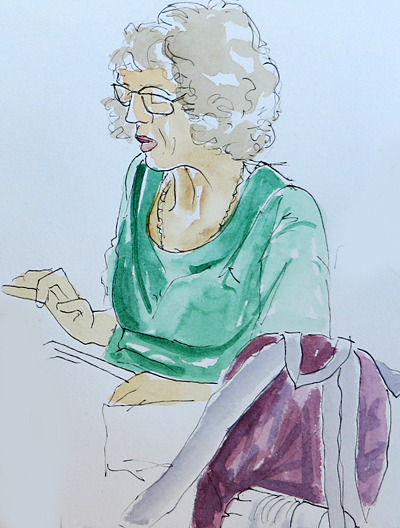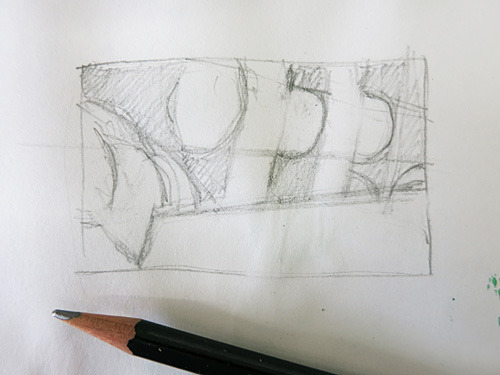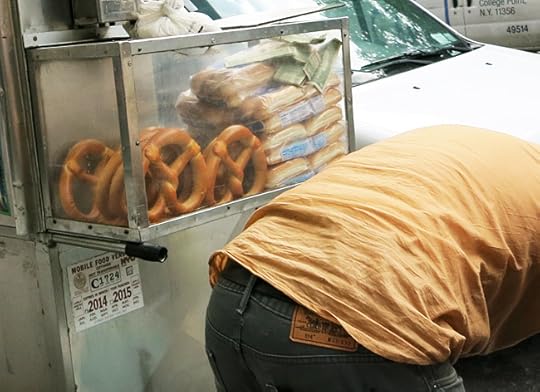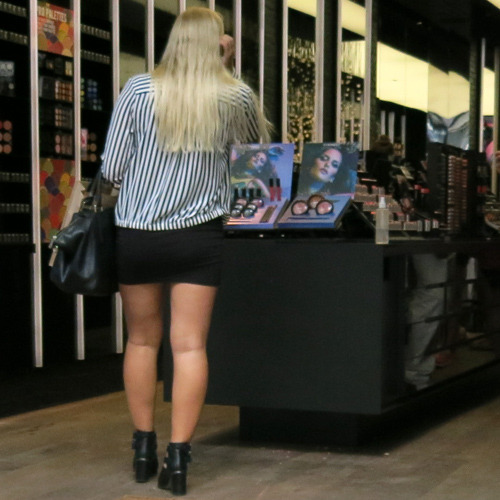Elizabeth Adams's Blog, page 73
September 10, 2013
Unpacking
...and getting ready to stay home a while.
Last Thursday we left Montreal again and went back to our former home on the border of Vermont and New Hampshire for the wedding of a dear young friend. While there we also caught up with several other old friends and family members, in the first few days of the beautiful New England autumn, and it was, to say the least, an absolutely wonderful few days -- a homecoming of sorts, a time of connecting and reconnecting with people we love very much.
The wedding was truly beautiful, and also ended up feeling, to us, like a celebration of our own long connection with a family who were our next-door neighbors, back when we were the age of the bride and groom: we've known the bride from the day of her birth, and are very close to her brother and sister and their parents. There were lots of happy tears and lots of laughter.
The bride had asked me to read or write something for her wedding, and after considering a number of options I decided to try to write a sonnet. During the composition it doubled in size, becoming a 28-line poem, but I managed to keep the whole thing in iambic pentameter. I read it during the ceremony, right after they exchanged their vows. Because it was personal and written for them, I'm not going to share it here, but the whole thing was a wonderful experience for me, and apparently it was moving for other people as well. I'm so glad that they asked me, and that I decided to go ahead and challenge myself to write and present a personalized marriage ode, since that's what it ended up being.
While there, we also celebrated connections in art, in music, in long friendships and in welcoming new life. We visited the home of our friend who is the director of a gallery and art center with which I was once very involved, especially to see her daughter and partner and their beautiful three-week-old baby, and we had lunch with a lifelong friend and musician, now approaching his 75th birthday -- he and I spent quite a while at the piano, listening to his latest compositions and playing some four-hand duets, and talking about his new CD which Phoenicia will be publishing later this year. And we met our niece and sister/sister-in-law at the gorgeous new cafe at King Arthur Flour, a business that's grown exponentially since our early days in Vermont. During the long weekend, we stayed at the home of the other couple with whom we've been very close friends for thirty years, catching up with them and with their youngest son, who's an accomplished guitarist and recent graduate of the Berkeley School of Music, just starting out in his career.
It sounds like an idealized vision of the world -- all this happiness -- but of course that's not the whole picture. These relationships are special because they span a lot of years during which we've shared both the dark and the light times in our lives. Nearly all of the people I'm talking about here, including ourselves, have had hardships, illness, and loss in their lives; part of the reason we wanted to go down and visit right now are the recent deaths of two mutual friends. We talked a good deal about American and Canadian politics and events in Syria and the world - particularly poignant because J.'s father was born in Damascus, and the family has many continuing connections to the Middle East. Economic conditions have affected almost everyone in the U.S., not least of all the young; that subject came up too, along with the changes in society over the past decade and a half.
But the realization, after more than thirty years of relationship, is that nothing is more important than friends and family, and that we want and need to spend more time with the people we love. During these days my heart was so full, both with love I wanted to give, and with love received. It's only later in life, I think, that we begin to understand how love actually works, and that the parables are right: mustard seeds actually do grow into great bushes; a vineyard needs to be pruned and cared for; the wine-jug of love and hospitality is actually bottomless, and we don't need to fear it running dry.
And now we're back home; I'm in the studio with the cat on my lap, thinking ahead to fall, singing, writing, working, and staying put for a while.
September 2, 2013
Travel Sketches
We're back in Montreal after a few days on the road. The first stop was at a New England lake where we spent a couple of days with old, close friends, savoring the end of summer. One of those days was rainy, and we were mostly inside the rustic house where they were staying. J. and I painted each other, and there was a marathon jigsaw puzzle session...good times.
Then we went to Wilmington, Delaware for a family funeral. It was the first time in more than 20 years that Jonathan and some of his cousins had been together. We had a couple of longish waits in airports, so I drew some fellow travelers, trying to capture a quick portrait of each. I added the watercolor on the plane.
August 31, 2013
Seamus Heaney
I'm in Wilmington Delaware, in a
suburban hotel, for a family funeral. The dead
aunt-in-law was 97, the wife of my father-in-law's youngest brother, and the loving mother of five
children, one of whom died in his early adulthood: today she'll be buried beside
him. But because I don't know this part of the family well, my thoughts
keep turning to Seamus Heaney, and I know today a part of my mourning at the graveside
will be for him.
I can't even describe what his poetry meant to
me: it often moved me deeply, and has given me unforgettable images, but
his work is also one of very few high-water marks of English language
usage written in my own lifetime: he is, for me, the contemporary
Shakespeare, Yeats, Joyce, Eliot with whom I feel an immediate and
personal connection. His love for the Greek classics as well as the
great Anglo Saxon myths was a comfort and reassurance that my own
inclinations weren't completely outmoded. It's his words that speak to me
when I am in the British Museum looking at the Celtic and Roman Britain
galleries; even though much of my family history took place on a
different continent, this is my history too...
And
at the same time he spoke and wrote of personal life, of nature and
relationship to the land, of doing things with one's own hands, in a way
that I understood: he was an integrator of all of this, not an academic
or intellectual snob. And the English of his poems themselves was a
living thing, breathing and musical, meant to be spoken aloud.
So
I am very sad at the finiteness of this death -- too young -- and also
very grateful for all the poems he left us. In my
imagination he appears not in suit and tie, as we often see him in photographs, but in a work jacket and boots, standing somewhere in Ireland, a chunk of peat in
his hands.
---
I wrote about Eliot and Heaney back in 2007 in a three-part essay titled "Wastelands and Bog People." In that essay I quoted Blake Morrison:
"One does not have to look very deeply into Heaney's work ... to see
that it is rather less comforting and comfortable than has been
supposed. Far from being 'whole,' it is tense, torn, divided against
itself; far from being straightforward, it is layered with often
obscure allusions; far from being archaic, it registers the tremors and
turmoils of its age, forcing traditional forms to accept the challenge
of harsh, intractable material.... A proper response to Heaney's work
requires reference to complex matters of ancestry, nationality,
religion, history, and politics."
But the last word about the lifelong process we are talking about s is Heaney's himself:
"Perhaps the final thing to be learned is this: in the
realm of
poetry, as in the realm of consciousness, there is no end to the
possible learnings that can take place. Nothing is final, the most
gratifying discovery is fleeting, the path of positive achievement leads
directly to the via negativa.
August 27, 2013
More Fun with Color
Here are some little 5 1/2" x 5 1/2" color tests that became more like little paintings. Each one is painted with only one or two colors in addition to Azo Yellow and Indigo. This is lots of fun - try it yourself, and go fast!
Let's call this one "Spring Rain Over Mountains..."
maybe "Two Figures Running Through a Forest..."
and how about "Curled Creature and Stretching Creature in a Yellow Landscape?"
---
I'll be back on the road tomorrow, and spent some time this afternoon cleaning and refilling the half-pans in my travel watercolor set. Hope to have some sketches to show you later this week!
August 24, 2013
Weekend Color Experiments
Inspired by Liz Steel's color notes and example, I recently revamped my own watercolor palette. Some of the tubes in my watercolor box were at least thirty years old: a lot has changed in the industry since then and I needed to get up to speed. For a couple of weeks I've been testing seeing how some new pigments behave and interact with each other, and how they're different from my standard ones. By and large, I'm super happy with the changes, and really impressed by the brilliance, clarity and superb mixing qualities of these newer pigments. It's been fun and exciting to learn more and explore the modern world of color (who knew that modern pigments have coded numbers that standardize them across manufacturers? Not I!) I was a kid who could happily spend an entire afternoon rearranging her big box of Crayola crayons, so make of all this what you will...
So, be forewarned, COLOR-GEEK tech talk coming up -- I'm really grateful to Liz, and if the following is helpful to anyone, that's great. Please bear in mind that the color reproduction on-screen is close but only approximate.
The new colors I'm using are Quinacridrone Gold, Quin Burnt Orange, Quin Red, Nickel Azo Yellow, Pyrrol Orange, Indigo, Indanthrone Blue, and Sap Green. Yellow Ochre and Burnt Sienna will be phased out. My two standard yellows will be Nickel Azo and Winsor Yellow, with Cadmium Yellow still on the big palette but only used when I need its more opaque qualities; ditto for Cadmium Red. Cadmium and Cobalt are both toxic; and one of my goals was to move away from some of the more toxic colors. However, the Cobalts (blue, green, violet) will stay for me, since nothing has yet been
invented to replace their gorgeous hues.
For blues, I'm keeping Cerulean, indispensible for skies; my beloved Cobalt, and French Ultramarine, along with Indigo, which will help me create very dark darks. I'm not sure about the Indanthrone yet, that's the next pigment to test more extensively. I'm absolutely thrilled with Quin Gold and Quin Burnt Orange, alone and when mixed with blues and greens to create dark colors.

(Foliage painted with sap green, nickel azo yellow, indigo. Sky is cerulean blue.)
Most of the time, I like to mix my greens, though I do keep Hooker's Green Deep and Permanent Green on my palette, and Cobalt Green for occasional use. Sap Green is a unique color, very difficult if not impossible to mix, and because I paint so many landscapes and foliage, it seemed like it would be useful - and I think I'm going to love it. The photos don't show its exact hue, in spite of an hour of fiddling with Photoshop.
I only bought one of the many shades of Quinacridone Red - Rose - Coral that are available. I wanted something stronger and more brilliant than Alizarin Crimson but still in the cool red range, and so far Quin Red is fitting the bill beautifully. Pyrrol Orange is a new pigment, very brilliant, and more transparent than Cadmium Orange; I like it but it's almost too bright for me. We'll see.
Except for Winsor Yellow, which is a proprietary Winsor&Newton color that I just happen to really like, all the new paints were purchased by mail order from Daniel Smith.
August 23, 2013
Summer in the Country

Corn near Sangerfield, watercolor on Arches cold press, approx 10"x 4."
This view isn't far from where I grew up and where my dad lives. When I was in central New York to see him a few weeks ago, the corn was fully tasselled and omnipresent; I stopped here the morning I drove because it's a favorite vista anyway, and this field of corn looked particularly lush. The roadside was filled with wildflowers: Queen Anne's lace, chicory, thistles, and when I stepped into it a cloud of grasshoppers rattled up, hopping onto stems a little further away. It was exactly the sort of summer-in-the-country moment I miss a lot, now that I live in a city, and I suppose that's one reason for the painting.
A few days ago I strained my back while gardening, and yesterday the muscles really unwound, as I'd feared they might. I can't take anti-inflammatories, so mostly I just have to wait things like this out, though I try to keep moving and do the gentle back exercises that work for me. I've noticed that when I'm feeling fragile I more apt to find myself doing realistic, detailed work -- this one's almost a miniature -- probably it's a way for me to feel like I'm in control of something. In any case, it seems to be therapeutic, and I was also more comfortable standing at my drawing table than anywhere else.
We went on a grocery-shopping trip yesterday afternoon too. On the way home we stopped at a favorite bakery and bought two chocolate-frosted, raised beignets (doughnuts): a treat that was worth the pain of being seated in the car. (It's not easy to get a good doughnut in Montreal, but this bakery's are great.) To hell with the diet...a refrain that was repeated in the evening over a gin and tonic. Therapy comes in many guises!
August 21, 2013
Sweet peas
August 19, 2013
Exploring Michel's Garden

Le jardin de Michel, watercolor and ink on Arches hot press, 13"x 8"
My friend Michel asked me to do an illustration of his garden for his birthday, which was on Saturday. Little did I know what I was getting into! The image above is the first one I attempted. This is more or less what I planned to do, showing what was really growing and blooming. It took a long time to draw all those ivy leaves, but they form so much of the backdrop and frame for the garden, I couldn't leave them out!
But I didn't feel finished with the subject yet. One morning I went back and sketched the garden again, trying to find its underlying rhythm.
While I was there, sitting on the median strip between the bike path and the street, a young man came along on his bike and stopped to watch. I was concentrating and didn't look up for a while; then he spoke to me, and we began chatting. It turned out that he is an artist himself, a comic-book/graphic novel artist who's doing a project where he interviews and draws Montrealers he finds doing interesting things on the streets. He asked if he could interview me, and I said sure, so we talked. That was fun, and unexpected.
But I kept wanting to do something more abstract too. I did some small sketches like the one below to try to figure out the essential shapes and forms making up the composition, and how I might alter them.
I did a couple of failed paintings, of which you saw a fragment.
Springboarding from these latter two, over the weekend I did a much more abstract watercolor sketch. It's not much of a painting, but reducing the scene to its essential elements was a very productive exercise. It captures more of the energy of the lively hanging baskets and emphasizes the baskets and the tall vertical towers of runner beans, without getting caught up in details, which is so easy to do when looking at a garden. What I don't like here is the color -- I'm not fond of red and green together, and adding the yellow made it even less pleasing!
So today I decided to go back to black and white -- always better for me when I'm trying to look at structure -- and did this charcoal sketch, from an angle rather than straight on.
Interesting. The color really isn't important, and previously I think it complicated things, making an already busy scene even busier. I'm particularly interested in what we see when we look at a garden, or a larger landscape filled with plants. Most people would probably answer "color," but I think I respond more to form, and then to form-within-form: the garden's shape itself, the structures and repetions within it; shapes of individual plants, the shapes of leaves.
Like sculpture, which they are, it helps to see gardens in three dimensions. As soon as we move into 2 things get harder - which is why photographs of gardens rarely manage to convey the sense of being there. But an artist can choose what to emphasize. This sketch finally begins to approach what Michel did so well in designing his garden: leading the eye across and upward, while the repetitive element of the softly rounded hanging baskets forms a linking structure across the whole scene.
---
I couldn't sleep in the middle of last night, and I got up and studied the catalogue from last summer's "Van Gogh Up Close" exhibition in Ottawa. He was preoccupied with the same problem in many of his landscapes and garden pictures: how to move beyond the particular without ever relinquishing his love for, and great awareness of, that particular: for each single blade of grass, as he put it, and without creating works that are conventionally "pretty" or overly sweet. His work, with its all-over attention to structure and detail, rendered in various types of shorthand mark-making, are always built on attention to shape and form, even though we often think of their color first.
Cottage Garden,Vincent Van Gogh. Reed pen, quill, and ink drawing over graphite, 1888.
When that color is taken away, in his drawings, often done in sepia with a flat-nibbed pen, you can see how he was approaching the compositions, integrating a great deal into one unified whole, with a surface flatness that reflects his great interest in Japanese prints. There are no washes here, just larger and smaller marks, all very directional and consciously shaped. When I first saw his drawings, many decades ago, I didn't appreciate them. Now I find them very moving. Van Gogh was able to see the complex interlocking structure formed by plants, and to reduce it into an abstract texture of form and movement that, to me, resembles music.
It was hugely helpful to me to revisit these works, and I shut the book last night with a sense of profound gratitude and connection with this sensitive, suffering genius.
"In spite of everything I shall rise again:
I will take up my pencil, which I have forsaken
in my great discouragement, and I will go on
with my drawing."
Vincent van Gogh
24 September 1880
August 16, 2013
Back to Brooklyn, via the Village
Antiques in a shop window.
Pickled peppers.
Greenwich Villagers. I love her sharp gray peplum suit, and the pink baseball hat with his seersucker.
Just in front of Washington Square.
A great striped sweater-coat. And a bow in the hair.
Washington Square: fountains, guitar music, hanging out.
Dog-walkers. (There's a dog-run in the Square; always a scene.)
Oops, he caught me. That dubious look over the specs...
After that we met our friend at her nearby apartment and went out for pizza, and then walked down Lafayette to Chambers Street.
The new tower, from the back of the courthouse.
And back across the Brooklyn Bridge.
August 14, 2013
A Walk Up Broadway

So...back to New York. This was the view when we emerged from the Fulton Street subway station in lower Manhattan; that's the new building at the World Trade Center site in the background. It's incredibly tall, and looked almost unreal in the early morning light.
Two spires: St. Paul's Church in the foreground. J. and I stopped in a deli for a bagel and coffee, and then we split up; he went off to a camera store and then to visit a cousin whose office is nearby, and I decided to walk uptown on Broadway. I was headed for 12th Street, about 30 blocks north, and we planned to rendezvous at our friend's apartment in Greenwich Village around 2 pm. The only problem was the heat, which was beastly. My solution was to walk until I couldn't take it anymore, then step into an air-conditioned store for a while, of which, of course, there are many. But the focus of my walk was the street.
Construction. Always. In the middle of everything.
Suddenly, upscale retail: this is a window display at Kate's Paperie, SoHo.
Street scene looking north, Chrysler Building in the far distance.
Street fashion and make-up.
Typical, incredibly beautiful building facades of lower Manhattan. When I reached Canal Street I took a detour to Utrecht Art Supplies, where I bought some blocks of Arches watercolor paper in interesting sizes, and stood letting their big fan blow on me for a while. Then I headed back to Broadway and resumed my walk.
And we've got some for you...a whole store devoted to Converse All-Stars.
At Dean&Deluca, an ultimate deli. I went in to cool down.
Some of their fancy cookies. Those purple octopi are $4.50 each, but they're certainly cute. I didn't buy anything to eat, but somewhere around here I bought a loose black tank top, much cooler than what I was wearing, on sale for ten bucks, and changed my clothes in the store's dressing room.
Houston Street, the dividing line between SoHo (south of Houston) and Greenwich Village.
Grace Episcopal Church, Astor Place.
And its interior.
Finally, my destination: The Strand: "18 Miles of Books." I had a quick sandwich across the street, and then went in to browse. A whole huge store of English language books!
Ahhh.
(next post: back down to Washington Square, and a long walk back home across the Brooklyn Bridge.)






















































